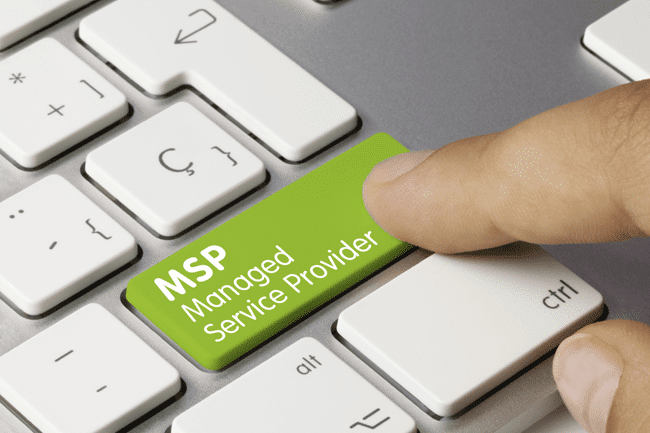Many businesses today face constant pressure to keep their technology running smoothly and securely. Managing IT in-house demands significant time, money, and specialized knowledge. This is where a Managed Service Provider, or MSP, offers a powerful solution.
An MSP is a third-party company that takes on the ongoing management of a business’s IT needs. They shift IT from a reactive “fix-it-when-it-breaks” model to a proactive approach, aiming to prevent problems before they impact operations.
Table of Contents
What Is a Managed Service Provider (MSP)
An MSP, or Managed Service Provider, is a third-party company that remotely manages a range of IT (Information Technology) services and functions for another business. Instead of a company handling all its IT needs internally, it outsources specific tasks or its entire IT infrastructure to an MSP.
MSPs typically operate on a subscription or recurring fee model, providing proactive monitoring, maintenance, and support. This differs from the older “break-fix” model, where a business would only call IT support when something went wrong. MSPs aim to prevent issues before they occur, ensuring smoother operations and reducing downtime.
What Does a Managed Service Provider (MSP) Do
Proactive Services
MSPs actively monitor every device on your network, including servers, computers, network switches, internet routers, and firewalls. This allows us to proactively identify and prevent issues – before you lose valuable working hours and potential profits.
Our RMM (Remote Monitoring and Management) setup recognizes a potential problem and alerts our technicians. This notification allows us to resolve the issue before it affects your business, minimizing or outright eliminating downtime.
Proactive services are further enforced by providing a vCIO, who can properly identify any technological gaps you have in your business operation and suggest what improvements would best suit your business challenges.
Reactive Support
An MSP’s principal function is to help your company and its users when technology issues arise. We offer a Helpdesk service to respond to your needs as quickly as possible. Our goal is to respond to all issues within 15 minutes.
Although, responding to a problem is different than solving it. In order to fix issues most efficiently, our Helpdesk operates like a well-run emergency room. In other words, we tackle IT problems on a priority and company-impact basis.
For example, emergencies that halt work and cause downtime, like a blocked email server, are handled right away. Whereas minor issues, like email filtering assistance, are taken care of after the IT emergency “fires” are put out.
Vendor Support
An MSP provides support for any of your technology-related vendors. For example, if your internet connection is down, you don’t need to call the internet service provider yourself. Gone are the days of waiting on hold and dealing with customer service; we’ll happily handle it for you. We’re your “One Call” to take care of all your technology-related problems. Our goal is to fix the problem as soon as possible, with little disturbance to you, and no unforeseen, additional charge at the end of the month.
Technology Equipment and Software Procurement
Our goal is to understand your business’s specific technology needs. We may have a quarterly Technology Roadmap meeting to discuss what technology (both hardware and software) is working for your business. We keep ourselves up to date on the most effective technology solutions.
When tasked with on-boarding a new employee, this allows us to source the best equipment for every individual at your workplace. Whether it’s utilizing/upgrading existing equipment or purchasing new state of the art machines, we will ensure that your team has the correct arsenal to battle their day-to-day tasks and the necessary software to hit the ground running.
What Are the Most Common Services Provided by a MSP
Managed Service Providers (MSPs) offer a range of IT services to businesses, focusing on proactive management and support rather than reactive “break-fix” solutions. While offerings can vary, several core services are commonly provided:
Remote Monitoring and Management (RMM)
MSPs continuously monitor their clients’ IT systems, including servers, networks, and endpoints, to detect and resolve potential issues before they cause downtime. This is foundational to the proactive MSP model.
Cybersecurity Services
With increasing threats, cybersecurity has become a top priority. MSPs provide various security solutions like firewall management, antivirus and anti-malware protection, threat detection, vulnerability assessments, email security, and sometimes even security awareness training for employees.
Data Backup and Disaster Recovery (BDR)
MSPs implement and manage robust backup solutions for critical business data. They also develop and test disaster recovery plans to ensure businesses can quickly restore operations and data after events like hardware failures, cyberattacks, or natural disasters.
Help Desk and Technical Support
MSPs offer centralized support for end-users, handling IT issues, troubleshooting software or hardware problems, and providing general technical assistance. This often includes remote support and a ticketing system for tracking requests.
Cloud Services Management
Many businesses use cloud platforms. MSPs help manage cloud infrastructure, services, and applications (SaaS, IaaS, PaaS). This can involve cloud migrations, optimization of cloud resources, and ensuring cloud security.
Patch Management and Software Updates
MSPs ensure all operating systems, applications, and firmware are regularly updated with the latest patches and security fixes. This minimizes vulnerabilities and improves system performance.
Network Management
This service includes monitoring network performance, optimizing connectivity, managing routers, switches, and wireless access points, and troubleshooting network-related issues to ensure smooth data flow.
IT Consulting and Strategy
Beyond daily operations, many MSPs provide strategic advice. They help businesses align their technology with business goals, advise on IT investments, hardware and software procurement, and long-term IT planning.





[…] What does an MSP do? […]